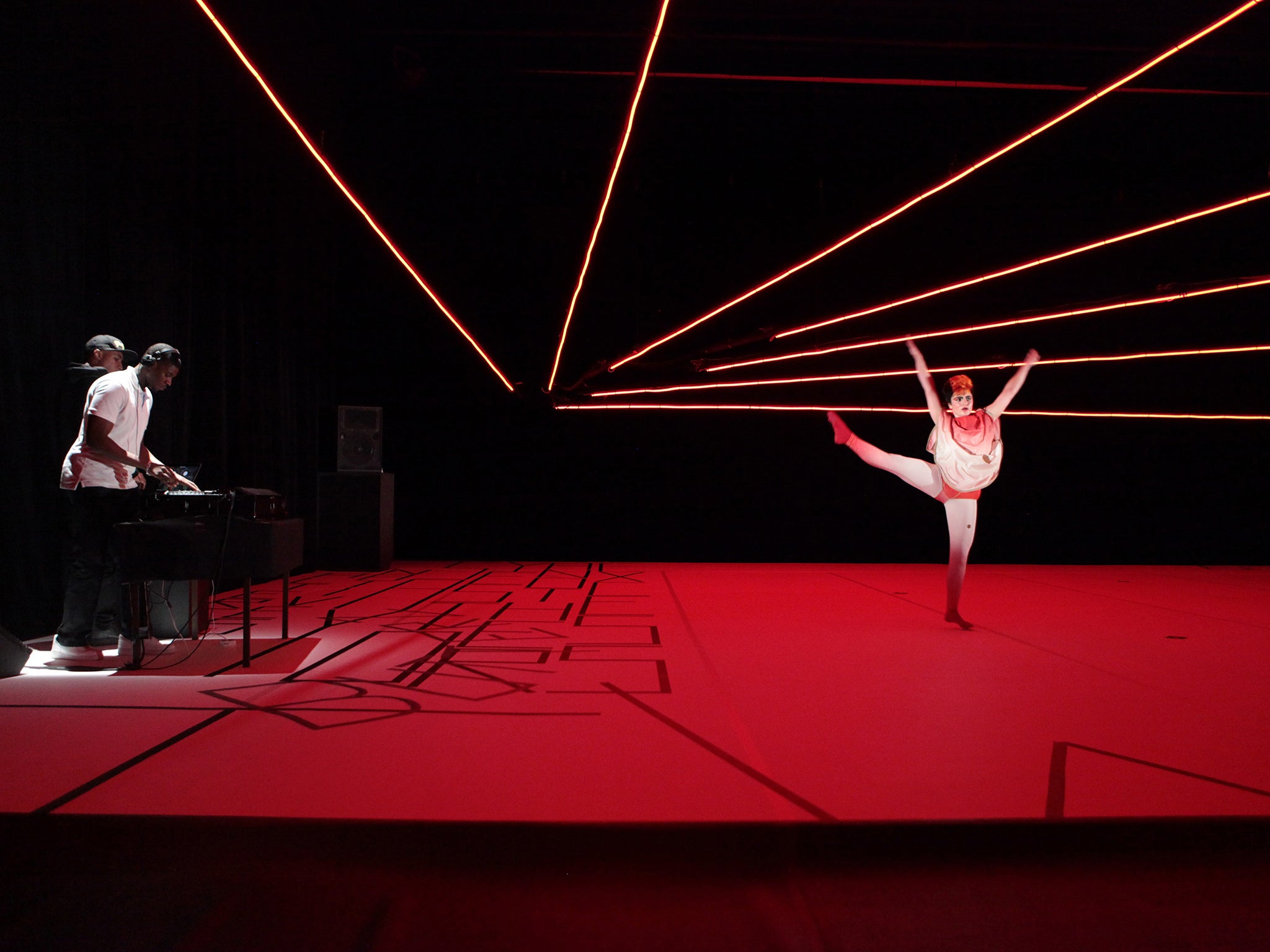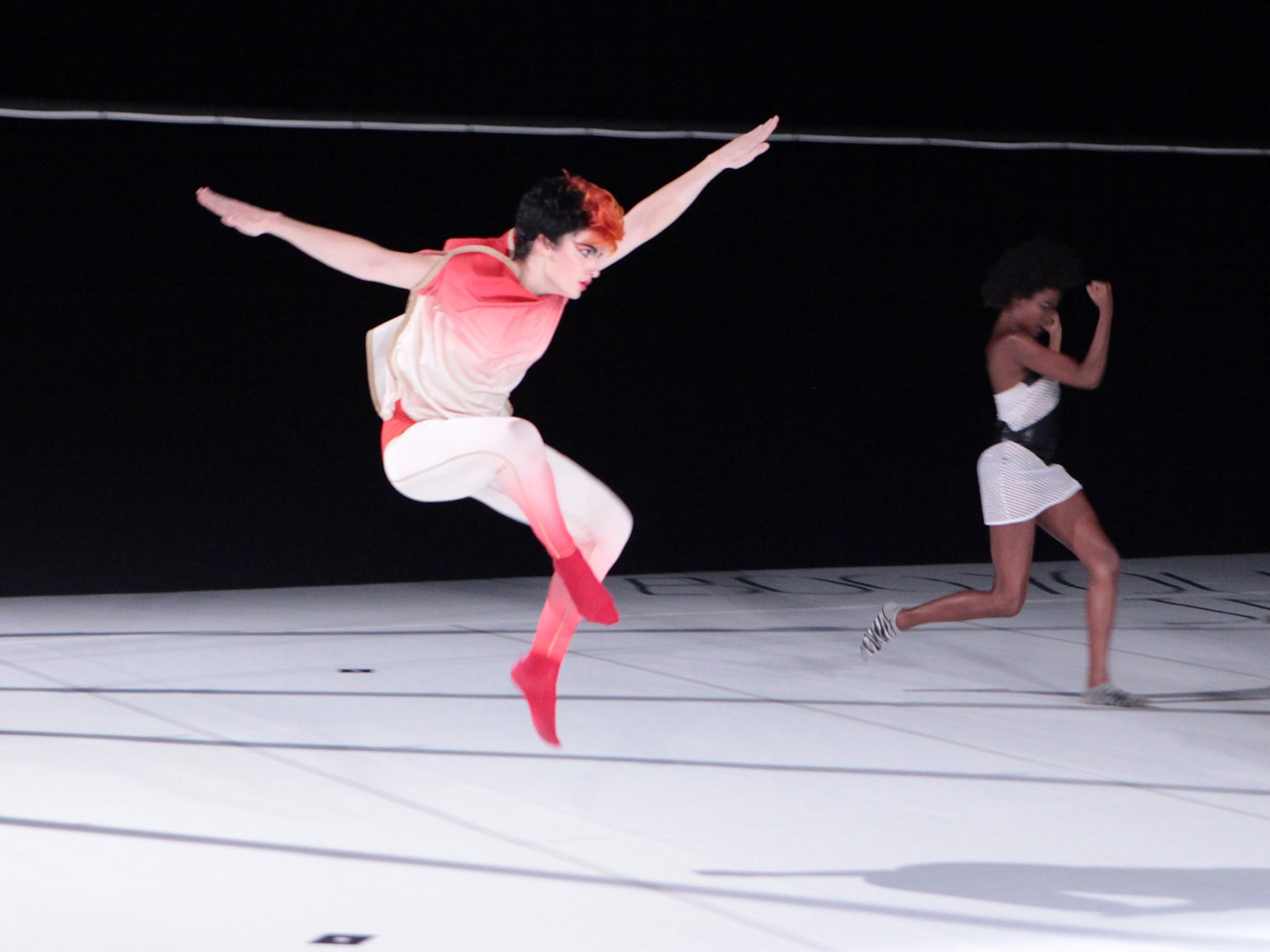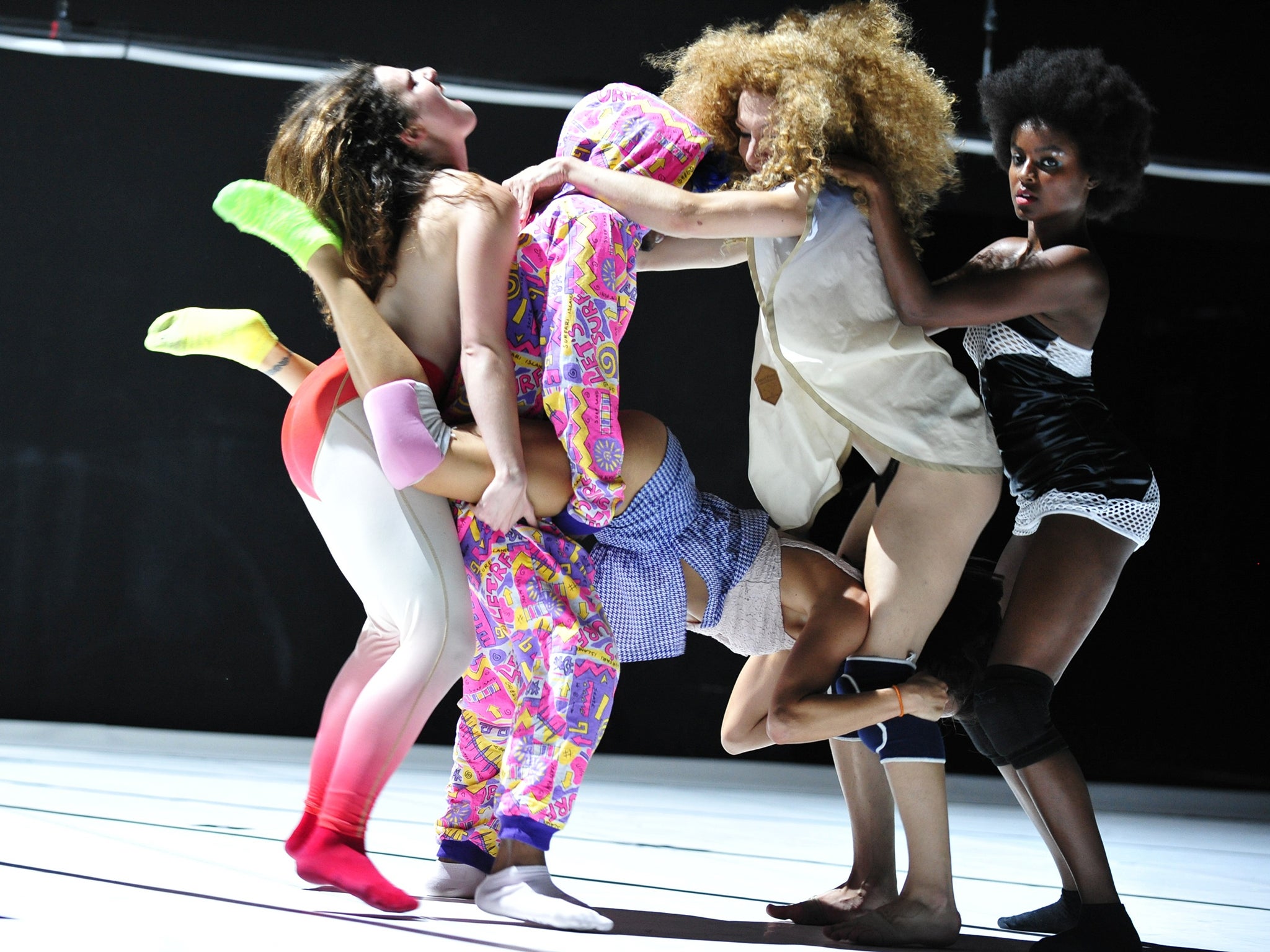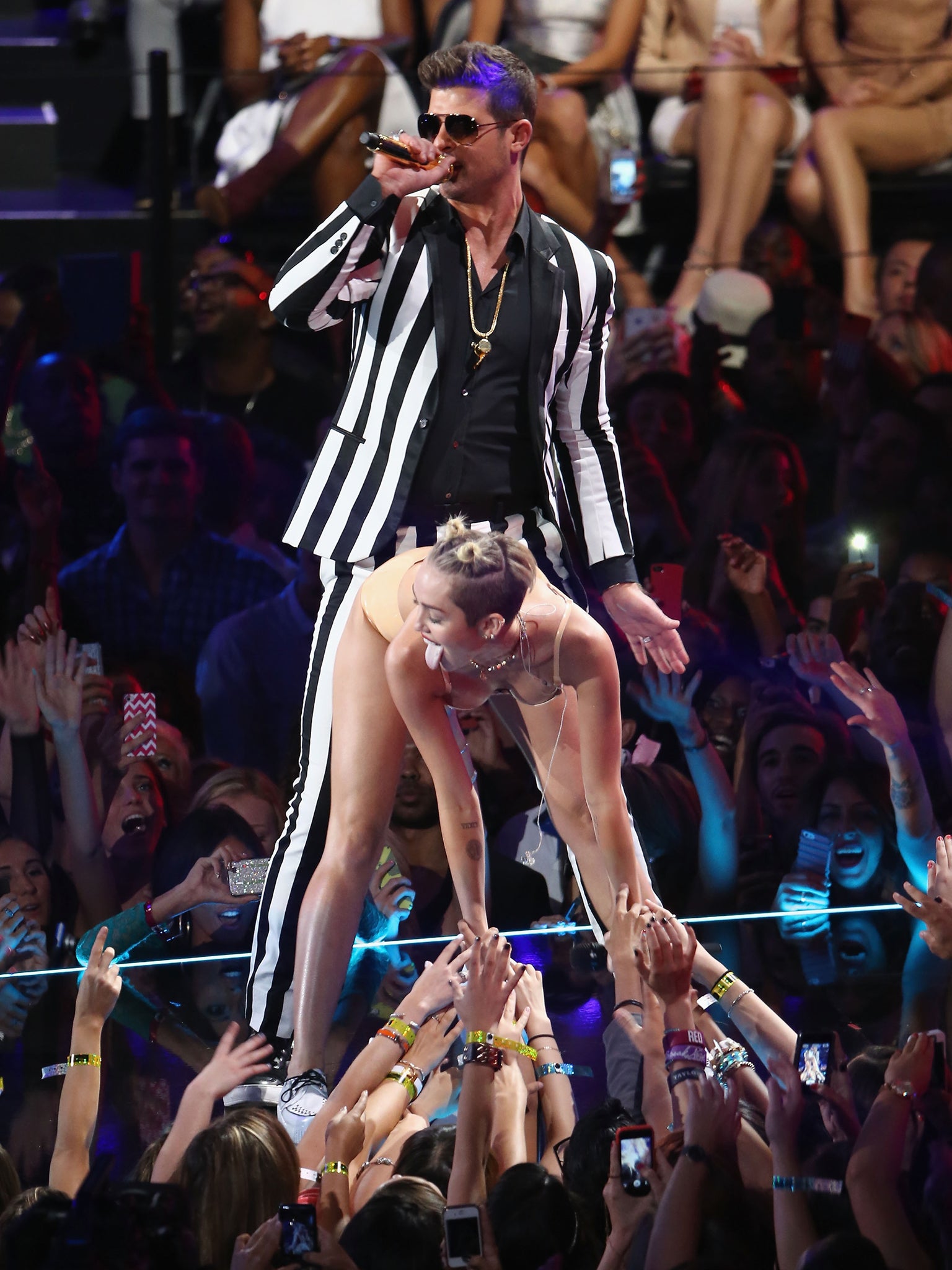Move over Miley Cyrus… but can twerking be a serious artform?
Meet the French duo making the case for club dancing

Our understanding of dance is strangely segregated.
There’s the dancing we do in clubs: for fun, with friends, after dark, to music that makes us unable to resist moving our bodies. Then there’s the dancing we see in theatres: professional, steeped in tradition, held at a distance. While both social dancing and performative dancing are the same at source – human bodies making meaning by moving to music – they remain walled off in practice.
One dance company is kicking down such distinctions, however. This week, Paris-based duo Cecilia Bengolea and François Chaignaud bring their work altered natives’ Say Yes to Another Excess – TWERK to Sadler’s Wells for its UK premiere. As its capitalised reference to that squatting, thrusting hip-hop dance craze du jour signals, it’s steeped in club culture, but gives its moves the same attention to form and line that you’d expect in a contemporary dance show.
“The piece [has] a diversity of dance styles and dance situations,” Chaignaud explains. “It’s very embracing; we’ve been practising a lot of the club dances – from house to krump to vogue to dancehall to twerk – but at the same time we were studying ballet and creating very abstract forms.”

TWERK reflects Bengolea and Chaignaud’s own extra-curricular experiences on club dance floors, as well as their dance studies, hers in anthropological dances in Argentina, his at the Paris Conservatoire. Widening their net for the show, the pair travelled to New York and Jamaica to learn trancelike, aggressively gymnastic female dancehall moves, and attended an urban dance bootcamp in Morocco. Their fellow performers – Élisa Yvelin, Alex Mugler, Ana Pi – also had input, throwing their experience of contemporary dance, New York vogue balls and Brazilian dance into the mix.
Chaignaud insists that they “didn’t want to pretend that the stage is a club – it’s obviously a stage. So, it connects with all the history of stage dances”. However, with the heavily made-up dancers wearing neon fluffy dresses and bright-pink onesies while flashing lights and lasers dart around, the show evokes the energy and spontaneity of the clubbing experience.
Also key to this spontaneity is the soundtrack of grime music, which is mixed live on stage by London DJs Elijah and Skilliam so that the dancers never know what’s coming next. “We wanted to invent moves, not to copy the steps of vogueing or dancehall but to abstract them, or bring from those energies and those rhythms something we could graft our dance on to,” begins Bengolea, “and I thought that grime was a similar process, [in] combining beats from many kinds of music – hiphop, and house, that up-and-down accent.”

Researching the show, the pair immersed themselves in London’s grime scene (which sprang initially from east London estates), as well as going to club nights at Scala and the now-defunct Cable.
“It was really rude,” recalls Bengolea with delight. “And the MCs are, like, 20 and all skinny, very pale, very drugged, on stage with girls who are like dolls, and almost naked!” The experience was even more fraught for Chaignaud: “I realised I wouldn’t feel good as a feminine boy, so I tried to pass as a girl, but it was stressful… The whole thing [has] a lot of tension, in both a negative and a positive way.”
Nor does TWERK shun that other crucial element of club dancing: sex. There’s an eye-popping sequence where, legs spread and butt cheeks in the air, the five dancers perform “ass talk”; their derrieres ripple and jiggle. Seen in a music video, you’d call it pure raunch; on stage, however, it demands critical attention. “It’s as difficult as a pirouette,” agrees Chaignaud. “Great twerking is a real virtuosity.”
Of course, these days twerking is a loaded activity, associated as it is with Miley Cyrus and the cultural debate she prompted, around both the sexualisation of young women, and the white appropriation of black popular culture.

I ask if the work’s imperative title is a response to that debate – after all, the piece itself involves acts of cultural appropriation. It isn’t: TWERK premiered in late 2012, before the Cyrus palaver. The pair had been introduced to twerking by American friends and lifted the title from a 2011 track called “Twerk” by US rapper Lady.
Nevertheless, they are prepared to stick up for Cyrus. “People were angry [about it], but she was free, she had fun,” says Bengolea with a laissez-faire shrug, though she does acknowledge that in her own work she is sometimes paralysed by a sense of “white privilege”.
Ultimately, though, the value of respectful, joyous exploration of other cultures trumps her fears. “Why separate the practices of dance? I don’t think it’s a question of owning the gestures forever. It’s interesting to mix styles and cultures.”
Chaignaud goes further, suggesting that the whole conversation around twerking unwittingly exposed a dance-world hierarchy, whereby some styles are ignored while others are bestowed with the status of art. “[That debate] raised a question about why some dances become very well-funded, and other dances just remain in the dark.” How, then, have audiences and dance critics responded to TWERK so far? Although the show is coming to the UK for the first time, it has already been performed in cities across western Europe, in New York, and Japan.
“Critics get stuck on [the twerking section] which I feel is a pity,” says Chaignaud. “Our body has all these different potentialities, from spiritual to sexual to formal … and sexual expression [is] so often segregated – for the worse. This piece is very much embracing [that aspect of dance], but not obsessed by it. So we enjoy the critics who can analyse or reflect or criticise – but on all the levels.”
As for audiences, the main problem so far has being keeping them in their seats. “Some people say ‘I would prefer we were not in our seats so we could dance too’ – which is a great compliment to the musicians,” begins Chaignaud. “But it’s also a way to say ‘hmm, those dances don’t deserve to be watched on a seat, whereas Swan Lake [does]’. It’s important to make the statement that those club dances are also part of art history.”
‘altered natives’ Say Yes to Another Excess – TWERK’ is at the Lilian Baylis Studio, Thur and Fri, Sadler’s Wells (sadlerswells.com)
Join our commenting forum
Join thought-provoking conversations, follow other Independent readers and see their replies
Comments